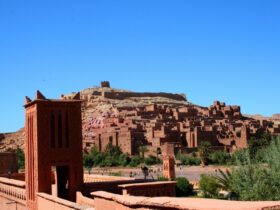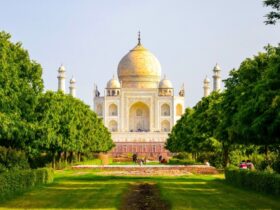Amsterdam History tour services are incredibly popular tourist activities, and are available from a large number of suppliers across the city. They allow visitors to the Dutch capital to step into its incredible past. Amsterdam is uniquely suited to public tours focussing on the city’s past. In 2010 the Grachtengordel – the central 4 canals – were declared a UNESCO World Heritage Site. Many of the buildings that line the Grachtengordel canal are several hundred years old, and the city has preserved its original layout to a remarkably large degree. As such an Amsterdam history tour can lead you quickly into Amsterdam’s convoluted and unique history.
It is easy to find an Amsterdam History Tour at Dam square, which is appropriate since it is where the city began. The square lies at the centre of what was once medieval Amsterdam. The name of the square derives from its original function – a dam on the river Amstel. But Dam square has evolved over the course of Amsterdam’s expansion into a major European Capital.
Originally the square was used as a fish market, during the 14th and early 15th century. It was formed of two squares, the actual dam and the Plaetse, an ancient plaza to the west of the Dam. The Dam gradually expanded to be large enough to accommodate a market, and it became a common place for ships to load and unload goods. The Damrak was the site of the first incarnation of what we would recognise today as a stock market at the beginning of the 18th century.
Dam Square has also been the site of many major historical events of Amsterdam’s past. During the Spanish Inquisition of the 165h century, Dam Square was the site of more than 1000 witch burnings; Kings and Queens of the Netherlands have been historically crowned there. In addition many famous residents of Amsterdam have lived on or close to Dam Square, such as Dirk Van Os and Jan Van der Heyden.
At the end of World War II Dam Square was the site of a horrible tragedy. Following German capitulation on May 5th 1945, on May 7th Amsterdammers began to gather on Dam Square to wait for the arrival of Canadian troops to liberate the city. A unit of Kriegsmarine were in a club on the border of the square – they watched as the Amsterdammers began to dance and sing. The reason is unclear, but the Germans began to fire into the crowd, killing 22 and badly wounding around 120. The massacre is part of the reason the Dutch National Monument was placed there.
There is no more perfect place than Dam Square to start an Amsterdam history tour. This is the heart of the city – today it retains its historic and symbolic importance to Amsterdammers. It is frequently used as a site for protests, demonstrations and events of all kinds. It continues to be the site of historic and dramatic events – in 2003 Bulgarian mobster Konstantin Dimitrov was assassinated there.







